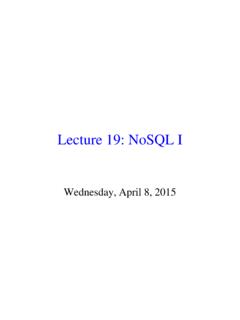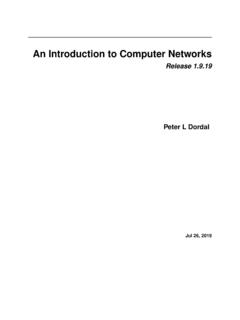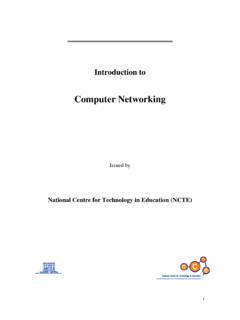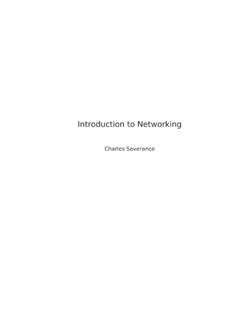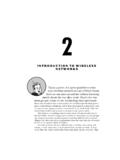Transcription of Computer Networking - Department of Computer …
1 Dr. Philip Cannata 1 Computer Networking Dr. Philip Cannata 2 Dr. Philip Cannata 3 Extenuating Circumstances If you have difficulty meeting the requirements of this course, fail to hand in an assignment, or miss an exam because of extenuating circumstances, please advise your instructor in writing (not email) at the earliest possible date so that your situation can be discussed.
2 If you encounter an unexpected medical or family emergency or a random act of Nature that causes you to miss the due date for homework or miss a quiz or exam, you must present suitable documentation in writing (not email) to the instructor before special consideration will be given. A file of all written correspondence will be kept by the instructor and decisions regarding them will be made at the end of the semester. Dr. Philip Cannata 4 Piazza Dr.
3 Philip Cannata 5 Course Overview Dr. Philip Cannata 6 introduction 1-6 Chapter 1 introduction Computer Networking : A Top Down Approach 6th edition Jim Kurose, Keith Ross Addison-Wesley March 2012 A note on the use of these ppt slides: We re making these slides freely available to all (faculty, students, readers).
4 They re in PowerPoint form so you see the animations; and can add, modify, and delete slides (including this one) and slide content to suit your needs. They obviously represent a lot of work on our part. In return for use, we only ask the following: v If you use these slides ( , in a class) that you mention their source (after all, we d like people to use our book!) v If you post any slides on a www site, that you note that they are adapted from (or perhaps identical to) our slides, and note our copyright of this material. Thanks and enjoy!
5 JFK/KWR All material copyright 1996-2012 Kurose and Ross, All Rights Reserved Dr. Philip Cannata 7 Typical Computer Network(s) Dr. Philip Cannata 8 Typical Computer Network(s) Dr.
6 Philip Cannata 9 Packet Switching Dr. Philip Cannata 10 introduction Protocol layers Networks are complex, with many pieces : hosts routers links of various media applications protocols hardware, software Question: is there any hope of organizing structure of network?
7 Or at least our discussion of networks? 1-10 Dr. Philip Cannata 11 introduction Organization of air travel a series of steps ticket (purchase) baggage (check) gates (load) runway takeoff airplane routing ticket (complain) baggage (claim) gates (unload) runway landing airplane routing airplane routing 1-11 Dr.
8 Philip Cannata 12 introduction ticket (purchase) baggage (check) gates (load) runway (takeoff) airplane routing departure airport arrival airport intermediate air-traffic control centers airplane routing airplane routing ticket (complain) baggage (claim gates (unload) runway (land) airplane routing ticket baggage gate takeoff/landing airplane routing Layering of airline functionality layers: each layer implements a service via its own internal-layer actions relying on services provided by layer below 1-12 Dr.)
9 Philip Cannata 13 introduction Why layering? dealing with complex systems: explicit structure allows identification, relationship of complex system s pieces layered reference model for discussion modularization eases maintenance, updating of system change of implementation of layer s service transparent to rest of system , change in gate procedure doesn t affect rest of system layering considered harmful?
10 1-13 Dr. Philip Cannata 14 introduction Internet protocol stack application: supporting network applications FTP, SMTP, HTTP transport: process-process data transfer TCP, UDP network: routing of datagrams from source to destination IP, routing protocols link: data transfer between neighboring network elements Ethernet, (WiFi), PPP physical: bits on the wire application transport network link physical 1-14 Dr.






